Rising Demand in Automotive Sector
The automotive industry is increasingly adopting Polymethyl Methacrylate (PMMA) for various applications, including interior and exterior components. This trend is driven by PMMA's lightweight nature, which contributes to fuel efficiency and overall vehicle performance. In 2025, the automotive sector is projected to account for a substantial share of the PMMA Market, as manufacturers seek materials that enhance aesthetics while providing durability. The shift towards electric vehicles further amplifies this demand, as PMMA is utilized in components such as displays and lighting systems. As automotive design evolves, the versatility of PMMA positions it as a preferred choice, potentially leading to a compound annual growth rate that reflects the industry's transition towards more sustainable materials.
Innovations in Medical Applications
The healthcare sector is witnessing a surge in the adoption of Polymethyl Methacrylate (PMMA) for various medical applications, including dental prosthetics and intraocular lenses. The PMMA Market is poised for growth as advancements in medical technology continue to enhance the material's properties, making it suitable for a wider range of applications. In 2025, the demand for PMMA in healthcare is expected to rise significantly, driven by the increasing prevalence of age-related eye disorders and the need for durable, biocompatible materials. This trend indicates a promising future for PMMA, as healthcare providers seek innovative solutions that improve patient outcomes while ensuring material safety and efficacy.
Sustainability and Recycling Initiatives
The increasing emphasis on sustainability is influencing the Polymethyl Methacrylate (PMMA) Market, as manufacturers and consumers alike seek eco-friendly materials. PMMA is recyclable, which aligns with the growing trend towards circular economy practices. In 2025, the demand for sustainable PMMA solutions is expected to rise, driven by regulatory pressures and consumer preferences for environmentally responsible products. This shift may lead to innovations in PMMA production processes, enhancing its appeal in various applications. The sustainability focus could potentially reshape the PMMA landscape, encouraging manufacturers to invest in recycling technologies and sustainable sourcing, thereby fostering a more responsible approach to material usage.
Growth in Construction and Infrastructure
The construction and infrastructure sectors are experiencing a notable increase in the use of Polymethyl Methacrylate (PMMA) due to its excellent optical clarity and weather resistance. PMMA is being utilized in applications such as skylights, windows, and signage, which enhances both functionality and aesthetics. The PMMA Market is likely to benefit from ongoing urbanization and infrastructure development projects, which are expected to drive demand for high-performance materials. In 2025, the construction sector is anticipated to represent a significant portion of PMMA consumption, as builders and architects increasingly prioritize materials that offer longevity and visual appeal. This trend suggests a robust growth trajectory for PMMA, aligning with the broader construction industry's recovery and expansion.
Consumer Electronics and Optical Applications
The consumer electronics sector is increasingly incorporating Polymethyl Methacrylate (PMMA) due to its superior optical properties and lightweight characteristics. PMMA is commonly used in the production of screens, lenses, and protective covers, which are essential for modern electronic devices. The PMMA Market is likely to see substantial growth as the demand for high-quality displays and optical components continues to rise. In 2025, the consumer electronics segment is projected to contribute significantly to PMMA consumption, driven by trends such as the proliferation of smart devices and advancements in display technologies. This suggests a favorable outlook for PMMA, as manufacturers prioritize materials that enhance product performance and user experience.
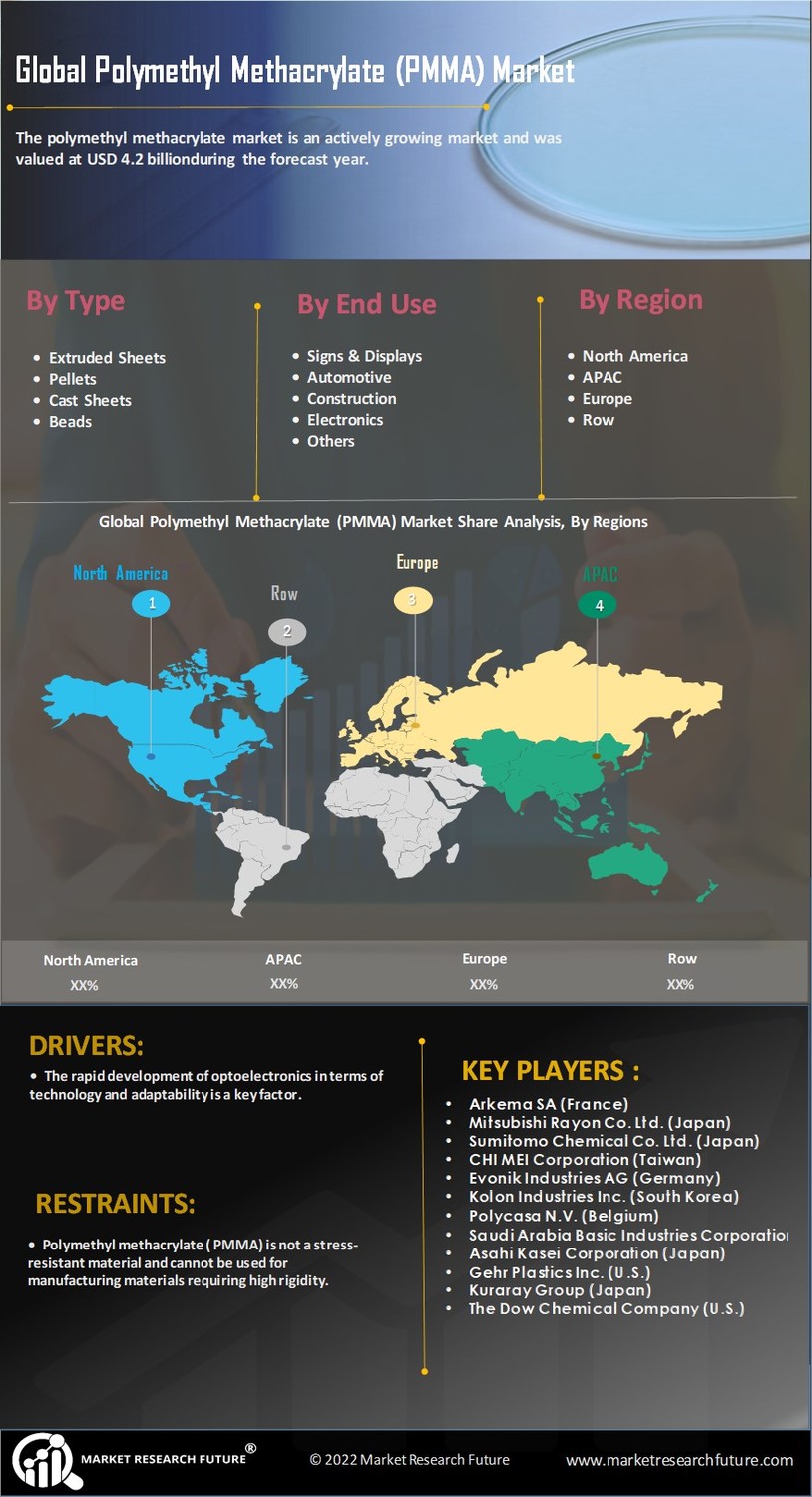

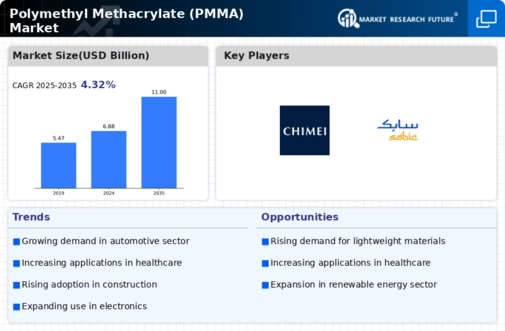


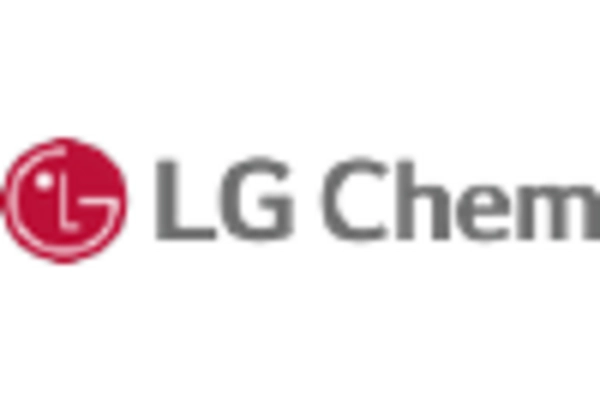
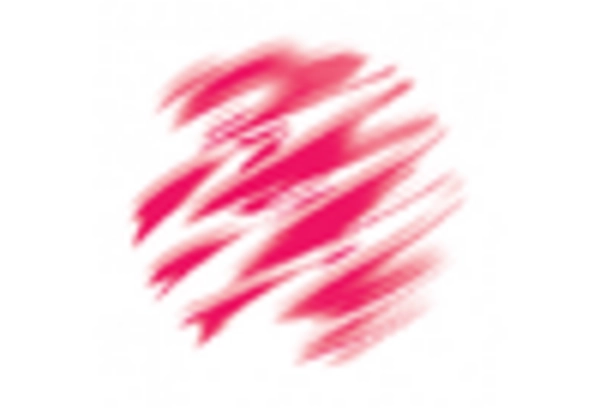


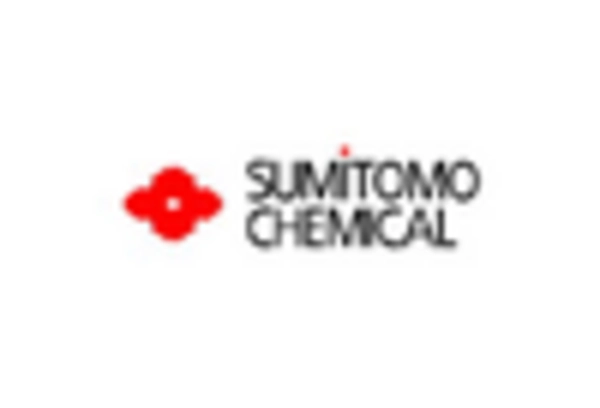








Leave a Comment